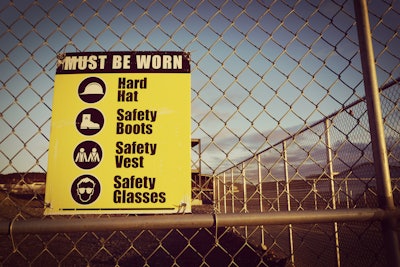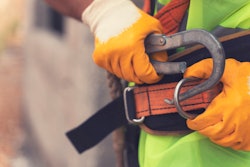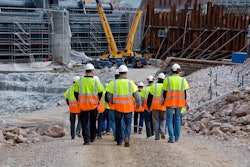
There are few subject more sensitive than discrimination in the workplace, and the fact is, it can take many forms. It happens in every industry, and the construction industry is no exception. The good news is that there are things that can be done about it, both from a managerial and an employee position. Management and ownership can take the reigns to steer the ship in positive directions, and employees have tools at their disposal to protect themselves and their co-workers by reporting dangerous activity when it happens. Let's take a look at some of the statistics that represent the issues the industry faces, and then some proactive steps that can be taken.
By The Numbers
Consider the reality that African Americans are 12% of the nation's general workforce, but in the realm of the construction industry it drops to half that number. Black employment is underrepresented, meaning that there are fewer black workers on a given jobsite, on average, than in other sectors. The disparity for women in the workforce is even greater. The most recent stats show women make up 46.6% of general labor, but only 10.9% of construction employment.
In the forthcoming Asphalt Contractor Magazine 2023 State of the Road Building Industry Report (December 2022) Audrey Copeland, the president of the National Asphalt Pavement Association, says, "NAPA’s 2020 market research indicated that the most persuadable audience—those most interested in learning more about the industry—are women aged 18-24, without a college degree or children. This group wants financial security and was most persuaded by our industry’s equity in pay between men and women."
At least in part, some of the continued problems with worker shortages could be solved right here. These are two available and willing groups of workers who want the opportunity, but continue to be left out of the majority of hiring decisions--or might there be other hurdles worth considering why they are underrepresented.
According to the U.S. Equal Employment Opportunity Commission (EEOC), which handles all areas and type of workplace discrimination complaints, tens of thousands of official charges are filed every year, between 60--90,000 annually (not just in the construction industry), dating back to 1997. Tens of thousands.
Over the last twenty years, the number of charges filed under racial discrimination has been the top issue (excluding general workplace employer retaliation), never dipping below 32% of total cases submitted. Behind the issue of race, the second and third dominant charges filed are those based on Gender and Disability. These numbers are hard to ignore, but let's look a specific scenario as a case study of these issues.
The Details
In a very recent example, on September 30, 2022, it was reported in the news that the EEOC filed two separate lawsuits in the hard-hit state of Florida. One was against J.A. Croson, LLC, a plumbing and HVAC group, and the other is against Alto Construction, a development and asphalt paving company.
The lawsuit alleges that Alto management regularly degraded and harassed black employees by flagrantly using the N-word in reference to them and around them. After being confronted, not only did it continue, but an unnamed supervisor made it known that, "we say the N-word here a lot."
As is historically the case, the insults did not stay contained to verbal abuse alone. A black employee was allegedly assaulted by a division manager after they approached them from behind and hit them with a shovel between the legs. After the obvious objection to being assaulted in such a humiliating and painful manner, the employee was fired later that same day.
The lawsuit against J.A. Croson contained descriptions of alleged unfair job assignment practices, racial slurs, and stereotypes being hurled at black and Hispanic employees on a near constant basis. Like with Alto, after complaints were brought to management, the victims were terminated. In a Construction Dive survey conducted during the pandemic, 77% of black construction workers said they were the victim of a racist behaviors. Examples included racist graffiti, verbal abuse, and even nooses being placed on the work site.
Addressing the Issues
In response to the increasing nature of these kinds of charges, on May 17, 2022, the EEOC held a hearing on the subject of Mistreatment of Women and People of Color in Construction, and heard from several expert witnesses on the challenges faced by minorities and women who work in the traditionally white and male-dominated construction industry.
Janel Bailey, co-executive director of the Los Angeles Black Workers Center, said, “It isn't mysterious that the EEOC called for a hearing regarding the trades specifically. The current situation didn't fall from the sky. This is the result of exclusive policies that have shaped the cultures of the industries and their unions. The good news is that we can choose to move away from that legacy, and it must be in partnership with Black workers and other workers who have been left out.”
From the testimonies given, and research done on proactive solutions, here is an non-comprehensive list of some of the ways employers can begin to address the negative impacts of racism in the workplace:
- Identify bias - This can be difficult, but crucial. Examine and note hiring, staffing, supply contracts and other representative decisions. Understand that identifying a bias is present is not some moral failing. It is a structural, systematic failing. It is so ingrained in day-to-day thinking and operation, that it isn't even noticed, which is why it takes real work to undo. It's in the numbers. Think back to the numbers of minority and women workers who are looking for the very work contractors are trying to fill positions in.
- Develop new company policy to specifically target and overcome bias - These policies can look like inclusive plans that target a specific amount of persons of color or women to be hired, as well as how many are being promoted internally to higher level positions. Are minorities and women being included in safety meetings or company decision making at any level? A workplace cannot be made safer or more inclusive for these employees if all the problem solving without them. Ask questions and hear what employees have to say. Lastly, there should be public and company wide discussion about the expectations for work environment going forward, and what the consequences will be for not respecting the personal dignity and safety of all employees.
- Assess diversity inventory - This is really a subset of the previous point. When creating new company or workplace policies, a vital part of that process is to take an actual survey of the demographics of workforce and management teams. That, in and of itself, can reveal a lot of information. It tells a story of its own. Any adjustments made are a good and valuable step in the right direction.
- Eliminate racial pay/wage gaps - It cannot be understated how important it is to pay staff fairly and equitably. Advocating the importance of this is crucial. Evaluate whether employees doing the same job, at the same seniority level, are being paid equally. According to a 2022 study by Compass, African American men make $.76 per dollar of their white counterparts, and Hispanic men $.75 per dollar. It's even worse for Black and Hispanic women, who earn $.57 and $.50 respectively.
- Inquire up/down the chain - This requires some real work to investigate, and takes time to bring about substantive change. It can mean researching minority owned suppliers, contractors, and other business partners who may have been overlooked in the past. This plays a big part in how an industry can change, region by region, decision by decision.
How To File A Complaint
For minority and women employees it is possible that you might find yourself in the position where every other effort has failed, and the only course of action left is to file a complaint with the EEOC. Discrimination doesn't just effect laborers, it effects management and executive employees too. So, it is important to know what your rights are and how to exercise them to protect yourself and/or others, because, as this article posits, it is at its core a safety issue.
Those of you who have worked on the production line or on a construction site know exactly why these issues are safety related. If co-workers, managers and supervisors are willing to dehumanize someone with the way they talk, then it is understandably difficult to feel safe when working in and around dangerous equipment or situations with those same individuals.
The EEOC Chair, Charlotte A. Burrows said that, “Discrimination and harassment in construction can be especially harsh and virulent, including displays of nooses; threats and physical harassment; and sometimes physical or sexual assaults. Yet, often workers do not know where to go to seek help.” In light of those comments, here are the steps that employees can take to seek justice if they've been wronged.
- The Timeline - There are time limits of 180 days from the time of the incident within which a charge must be filed. Under certain circumstances, the limit may be extended to 300 days if you are in an area where there is a state fair employment practices agency. Timeliness is an important factor.
- Determine Jurisdiction - This isn't a requirement, but it can help with the speed of intake for the charges and the follow-up. You can find your nearest field office and their contact information at this site: https://www.eeoc.gov/field-office. Many states and local jurisdictions have their own anti-discrimination laws, and agencies responsible for enforcing laws (Fair Employment Practices Agencies, or FEPAs). If you file a charge with a FEPA, it will automatically be "dual-filed" with EEOC if federal laws apply. You do not need to file with both agencies.
- What you need or don't need - It doesn't cost anything to file the charges with the EEOC. You don't need to have an attorney. However, here are some things you need:
- The name, address, and telephone number of the company, employment agency, or union that the charge is filed against, and the number of employees (or union members), if known.
- A short description of the event(s) with supporting documentation (if any) which caused you to believe that your rights were violated.
- The date(s) the event(s) took place.
- The names, addresses, and telephone numbers of any witnesses.
- Whether you've filed the same or similar charges with a state or local fair employment practice agency.
- A secondary contact who always knows where to reach you.
- Submit an inquiry online and schedule an intake interview - You can't begin the process by using this EEOC public portal. You must take this first step before any future legal action can be taken by the EEOC. If you don't have access to a personal computer or other device, you can call 1-800-669-4000 where EEOC staff will obtain some information from you and try to decide whether your situation is covered by the law.
The legal process and much more information about what the law's protections are can be found at the EEOC homepage: www.eeoc.gov
If you or someone you know has been the victim of workplace harassment and/or discrimination, talk to them about their rights, and what they can do about. You might be the factor that makes a difference, not only in their life, but in the future of others as well.




















